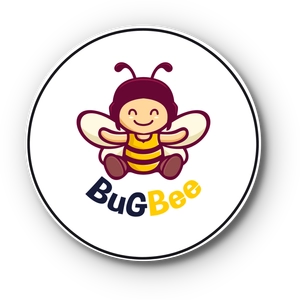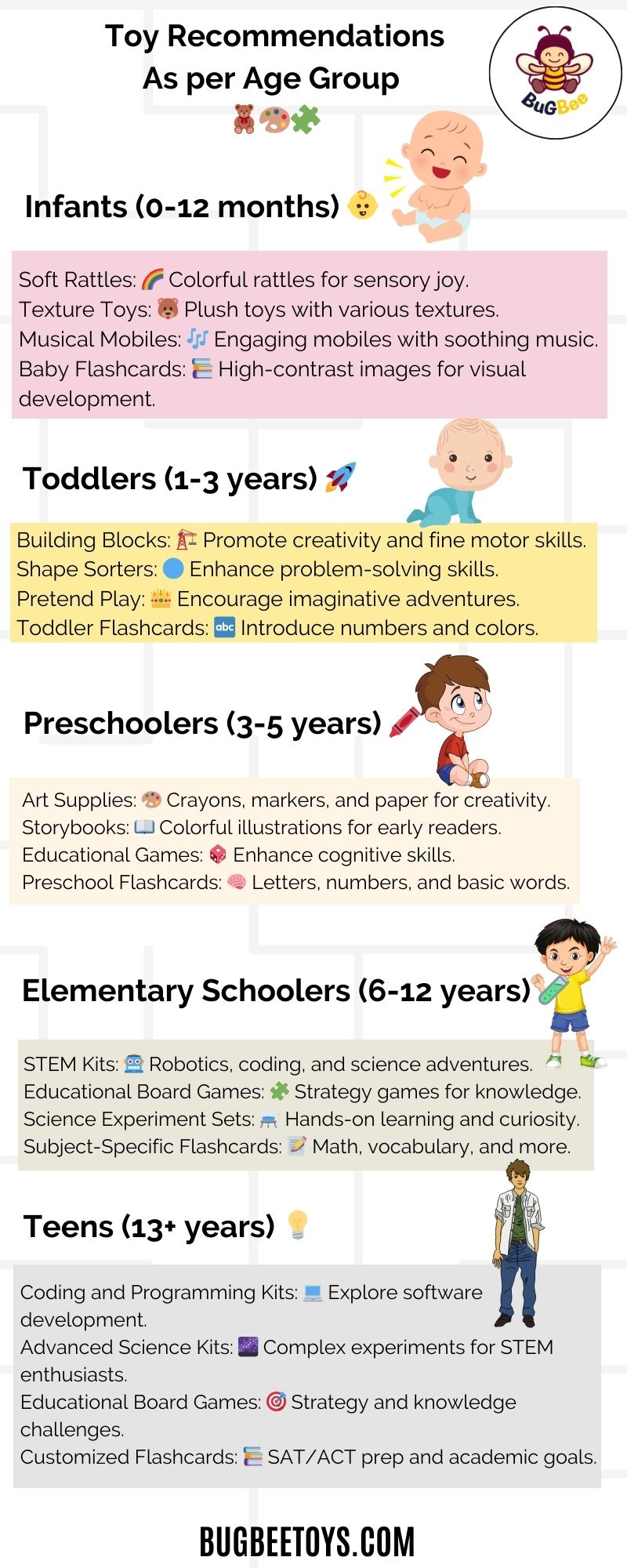we'll delve into the world of educational toys, helping you discover the perfect playthings tailored to your child's specific age group. We understand the importance of age-appropriate toys in nurturing your child's development, making the daunting task of selecting educational toys an effortless and enjoyable experience.
Introduction
As parents, we all want what's best for our children, especially when it comes to their education and development. Educational toys play a pivotal role in this journey, fostering essential skills and knowledge in a fun and engaging way. In this guide, we'll take you through the significance of educational toys and how they can benefit your child at various stages of their growth.
Why Choose Educational Toys?
Educational toys are designed with a purpose – to stimulate learning, creativity, and problem-solving skills. Unlike regular toys, they are crafted to align with your child's developmental milestones, ensuring they receive the right level of stimulation at the right time. Here's why you should consider choosing educational toys:
1. Cognitive Development
Educational toys encourage cognitive growth by challenging children to think critically and solve problems. Puzzles, building blocks, and educational games are great examples that promote logical thinking.
2. Motor Skills Enhancement
Toys like building sets, art supplies, and outdoor play equipment can aid in refining fine and gross motor skills. These activities help in muscle development and hand-eye coordination.
3. Language and Communication Skills
Educational toys often include books, flashcards, and interactive games that promote language development. They can expand your child's vocabulary, encourage reading, and enhance communication skills.
4. Social and Emotional Growth
Toys that encourage group play and cooperation, such as board games, can help your child develop social skills, learn to share, and manage their emotions effectively.
5. Preparation for School
Many educational toys are designed to prepare children for the academic challenges they'll face in school. This early exposure to learning concepts can give your child a head start in their education.
Age-Appropriate Toy Selection
Selecting the right educational toy is crucial for maximizing its benefits. Each age group has specific needs and developmental milestones, and choosing toys that align with these stages is essential.
Toys for Infants (0-12 months)
During this stage, infants are developing their sensory and motor skills. Opt for toys that stimulate their senses, such as colorful rattles, soft toys with different textures, and musical mobiles. These toys engage their senses and encourage motor skill development as they grasp and explore.
Toys for Toddlers (1-3 years)
Toddlers are curious explorers, eager to discover the world around them. Educational toys like shape sorters, building blocks, and age-appropriate puzzles are perfect choices. These toys encourage fine motor skills, shape recognition, and problem-solving.
Toys for Preschoolers (3-5 years)
Preschoolers are budding learners. Encourage their creativity and imagination with art supplies, storybooks, and interactive games. These toys foster cognitive development, language skills, and a love for learning.
Toys for Elementary Schoolers (6-12 years)
Elementary schoolers are at a stage where they are developing critical thinking and decision-making skills. STEM (Science, Technology, Engineering, and Mathematics) kits, educational board games, and science experiment sets are fantastic options. These toys promote problem-solving, analytical thinking, and a passion for science and discovery.
Toys for Teens (13+ years)
Teenagers require toys that align with their evolving interests and hobbies. Consider educational kits related to their areas of interest, such as robotics, coding, or advanced science experiments. These toys can prepare them for future academic pursuits and career choices.
Benefits of Age-Appropriate Toys
The benefits of selecting age-appropriate toys extend beyond immediate enjoyment. They set the stage for a lifelong love of learning and development. Here are some advantages:
1. Targeted Learning
Age-appropriate toys provide targeted learning experiences, ensuring that your child's developmental needs are met effectively.
2. Enhanced Engagement
Children are more likely to engage with toys that match their developmental stage, leading to increased interest and enthusiasm for learning.
3. Confidence Building
Success with age-appropriate toys can boost a child's confidence as they conquer new challenges and acquire new skills.
4. Smooth Transition to School
Ensuring a smooth transition to school is a crucial aspect of your child's development. Age-appropriate educational toys can play a pivotal role in preparing them for this exciting journey. Let's delve into the specific types of toys that can benefit children in different age ranges:
Toys for Infants (0-12 months)
Infants are in the early stages of sensory and motor development. To aid in their growth, consider the following types of toys:
-
Sensory Toys: Soft toys with various textures, crinkly fabrics, and squeaky components can engage their senses and promote sensory exploration.
-
Visual Stimulation: Mobiles with colorful, contrasting patterns and soft music can captivate their visual and auditory senses.
-
Tummy Time Mats: These mats encourage infants to lift their heads and develop neck and upper body strength, an essential skill for later motor development.
Toys for Toddlers (1-3 years)
Toddlers are active explorers, and toys that encourage physical activity and cognitive development are ideal:
-
Building Blocks: Stacking blocks or construction sets promote fine motor skills, creativity, and spatial awareness.
-
Shape Sorters: Toys that require matching shapes to corresponding holes enhance problem-solving skills and hand-eye coordination.
-
Pretend Play: Dolls, play kitchen sets, and toy vehicles encourage imaginative play and language development.
Toys for Preschoolers (3-5 years)
Preschoolers are eager learners, and their toys should stimulate their curiosity and creativity:
-
Art Supplies: Crayons, colored pencils, and washable markers paired with coloring books and art paper foster artistic expression and fine motor skills.
-
Educational Games: Board games that introduce simple math concepts, memory games, and word games can enhance cognitive abilities and social skills.
-
Science Kits: Basic science experiment kits for young children can nurture a fascination with the natural world.
Toys for Elementary Schoolers (6-12 years)
Elementary schoolers are developing critical thinking skills, and their toys should encourage exploration and problem-solving:
-
STEM Kits: Science, Technology, Engineering, and Mathematics kits such as robotics kits, coding games, and chemistry sets support a deeper understanding of these subjects.
-
Educational Board Games: Strategy-based board games like chess or educational versions of classics encourage critical thinking and social interaction.
-
Art and Craft Sets: Advanced art supplies and craft kits allow them to express their creativity in more complex ways.
Toys for Teens (13+ years)
Teens have evolving interests and academic pursuits. Encourage their passion for learning with these toys:
-
Coding and Programming Kits: For the tech-savvy, coding kits and programming tools offer hands-on experience in software development.
-
Advanced Science Kits: Delve into more complex scientific experiments and concepts, supporting STEM education and future career interests.
-
Educational Board Games: Board games designed for older children often focus on strategy, history, or complex problem-solving.
Remember, while these recommendations are tailored to specific age ranges, every child is unique. Pay attention to your child's individual interests and abilities when selecting toys. Ultimately, the right toys can inspire a love for learning and help your child navigate each stage of their educational journey with confidence
| Age Range | Recommended Toys |
|---|---|
| Infants (0-12 months) |
|
| Toddlers (1-3 years) |
|
| Preschoolers (3-5 years) |
|
| Elementary Schoolers (6-12 years) |
|
| Teens (13+ years) |
|
FAQ's
What are the toy age groups?
Toy age groups categorize toys based on the appropriate age range for children to safely enjoy and benefit from them. These groups help parents and caregivers select toys that align with a child's developmental stage.
What are the best toys for child development?
The best toys for child development are those that promote cognitive, motor, and social skills. Examples include building blocks, puzzles, art supplies, and educational games. Age-appropriate toys are designed to stimulate learning while being fun and engaging.
How to choose educational toys?
When choosing educational toys, consider the child's age and developmental stage. Look for toys that align with their current skills and encourage growth in areas like problem-solving, motor skills, language development, and creativity. Reading product labels and reviews can also help you make informed choices.
What is the toy age of a child?
The toy age of a child refers to the recommended age range for a specific toy. It indicates the developmental stage at which the toy is most suitable for safe play and educational benefit.
Why are there age ranges on toys?
Age ranges on toys provide guidance to parents and caregivers, ensuring that children play with toys that match their developmental abilities and do not pose safety risks. They help tailor the play experience to the child's stage of growth.
How many toys should a child have? The number of toys a child should have varies, but it's essential to strike a balance. Providing a variety of age-appropriate toys can stimulate learning and creativity, but too many toys at once can overwhelm a child. Rotate toys to keep their interest and focus on quality over quantity.
What does Montessori call toys? In Montessori education, toys are often referred to as "Montessori materials" or "Montessori learning materials." These materials are carefully designed to promote independent learning and hands-on exploration.
How old is the first toy? The concept of toys dates back thousands of years. The first toys were likely simple objects made from natural materials, such as sticks, rocks, or animal bones, used by early humans for play and learning.
What is toy pedagogy? Toy pedagogy refers to the study and practice of using toys and play as educational tools. It focuses on how toys can facilitate learning and development in children, considering factors like age-appropriateness and learning objectives.
Is Montessori for autism? Montessori education can benefit children with autism. The Montessori approach emphasizes individualized learning, sensory experiences, and self-paced exploration, which can be particularly helpful for children with autism spectrum disorders.
Why do Montessori toys have no color? Many Montessori materials are designed in neutral or natural colors to minimize distractions and encourage children to focus on the learning aspects of the materials rather than their visual appearance.
What is a learning toy? A learning toy is a toy specifically designed to facilitate learning and skill development in children. These toys often incorporate educational elements, such as puzzles, letters, numbers, or interactive features, to promote cognitive and sensory development.
What is toy-based pedagogy in NEP? Toy-based pedagogy in the context of the National Education Policy (NEP) refers to the use of educational toys and play-based learning methods to enhance the quality of education and foster holistic development in children.
the careful selection of age-appropriate educational toys can significantly impact your child's development, setting them on a lifelong path of learning. Whether enhancing cognitive skills, nurturing creativity, or preparing for academic challenges, the right toys can make a world of difference. Invest in your child's future by choosing educational toys that align with their age and developmental stage.
Explore Bugbee Toys to discover a world of educational toys tailored to your child's age group and witness their thriving educational journey.



